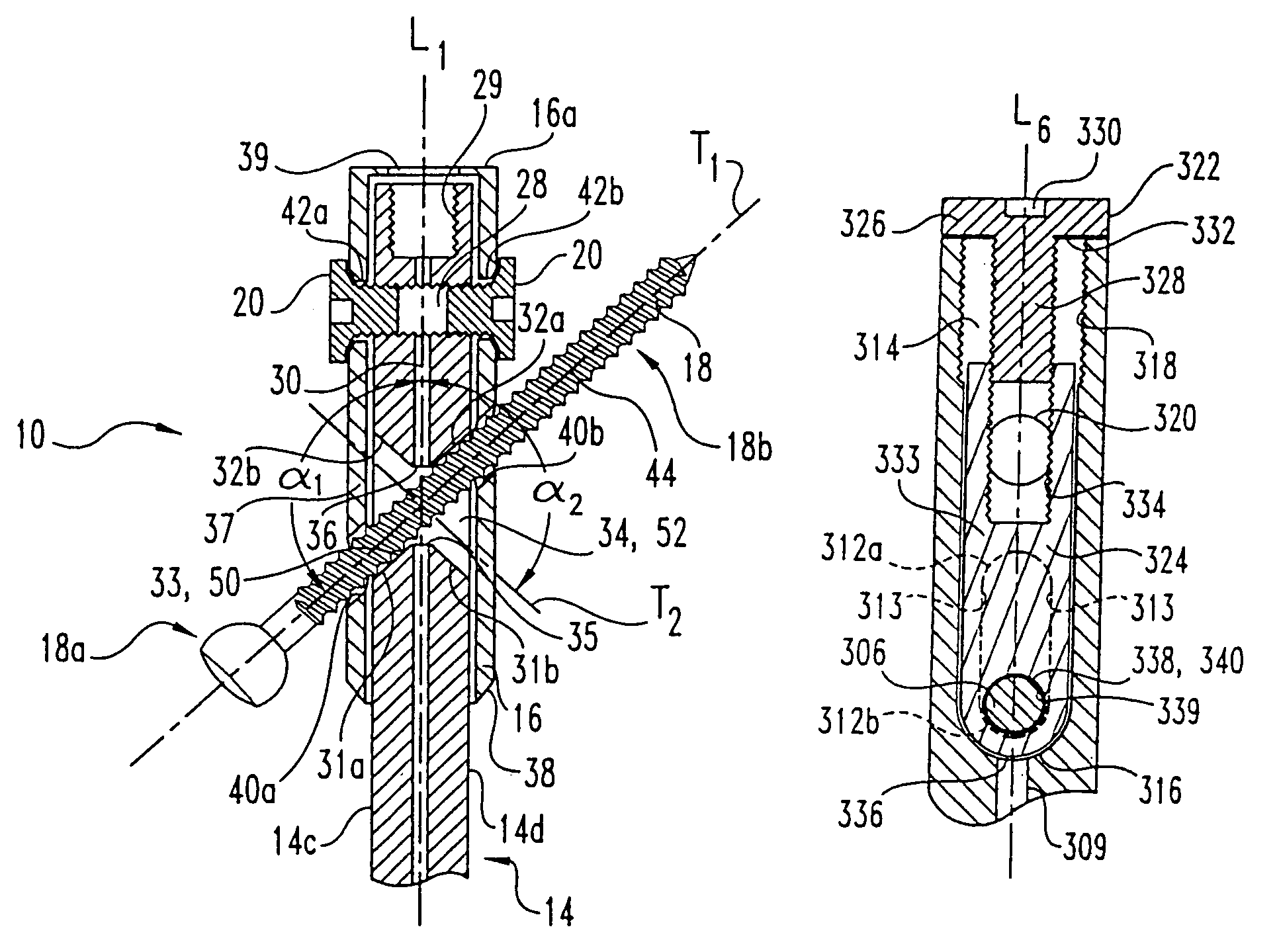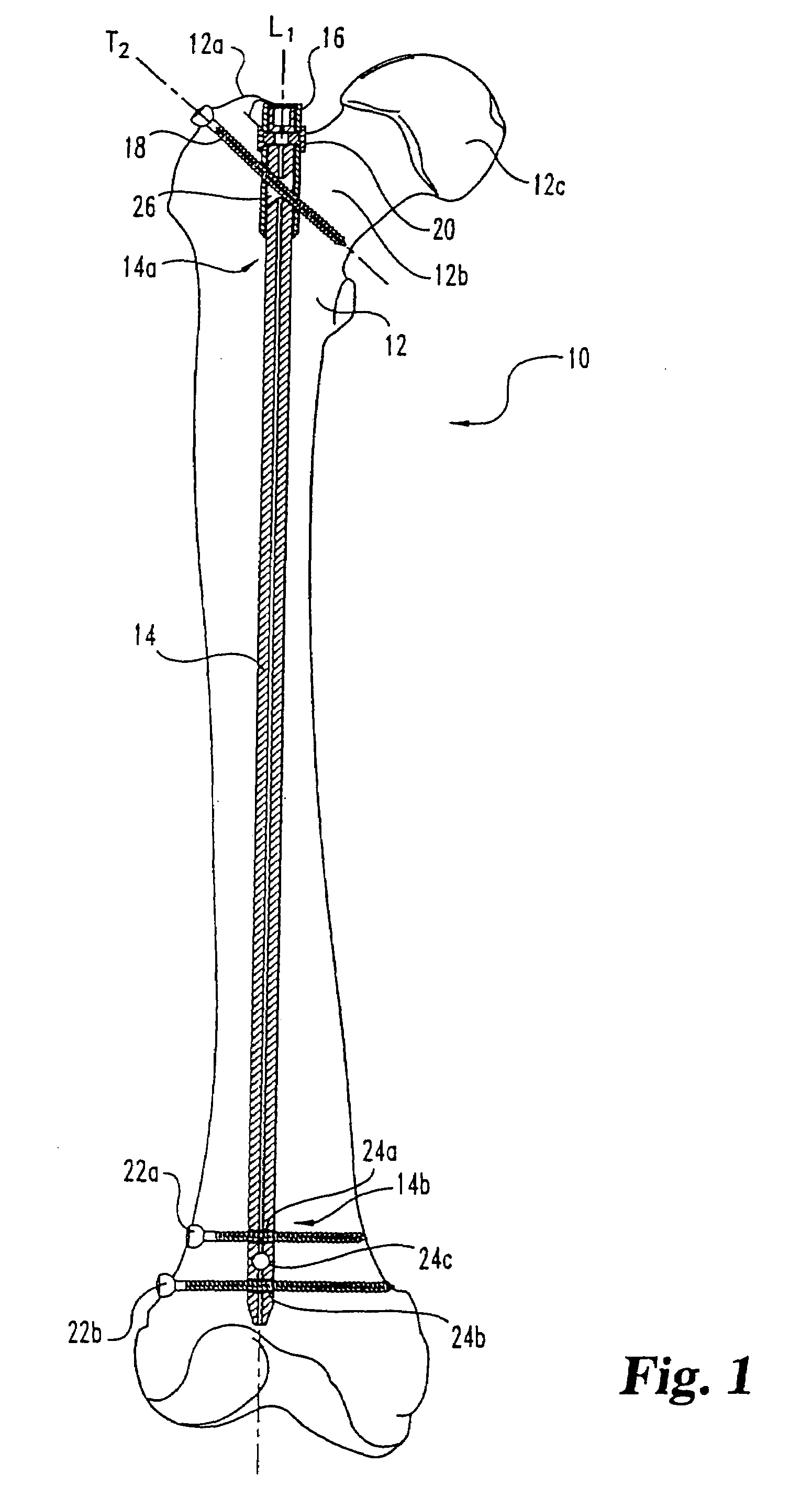Femoral intramedullary rod system
a technology of intramedullary rods and femurs, which is applied in the field of bone fracture treatment techniques, can solve the problems of improper healing, large femur fracture proportions, and affecting the healing effect of bone tissue, so as to reduce complexity and inventory costs
- Summary
- Abstract
- Description
- Claims
- Application Information
AI Technical Summary
Benefits of technology
Problems solved by technology
Method used
Image
Examples
Embodiment Construction
[0046]For the purposes of promoting an understanding of the principles of the invention, reference will now be made to the embodiments illustrated in the drawings and specific language will be used to describe the same. It will nevertheless be understood that no limitation of the scope of the invention is thereby intended, any alterations and further modifications in the illustrated embodiments, and any further applications of the principles of the invention as illustrated therein being contemplated as would normally occur to one skilled in the art to which the invention relates.
[0047]FIGS. 1–2 depict intramedullary system 10 according to one embodiment of the present invention. System 10 is shown implanted in femur 12 and includes an elongated intramedullary rod or nail 14, sleeve 16 and bone engaging member 18. System 10 also includes fasteners 20 and locking bone screws 22a, 22b. FIG. 1 illustrates system 10 as used in a first locking configuration with bone engaging member 18 pl...
PUM
 Login to View More
Login to View More Abstract
Description
Claims
Application Information
 Login to View More
Login to View More - R&D
- Intellectual Property
- Life Sciences
- Materials
- Tech Scout
- Unparalleled Data Quality
- Higher Quality Content
- 60% Fewer Hallucinations
Browse by: Latest US Patents, China's latest patents, Technical Efficacy Thesaurus, Application Domain, Technology Topic, Popular Technical Reports.
© 2025 PatSnap. All rights reserved.Legal|Privacy policy|Modern Slavery Act Transparency Statement|Sitemap|About US| Contact US: help@patsnap.com



